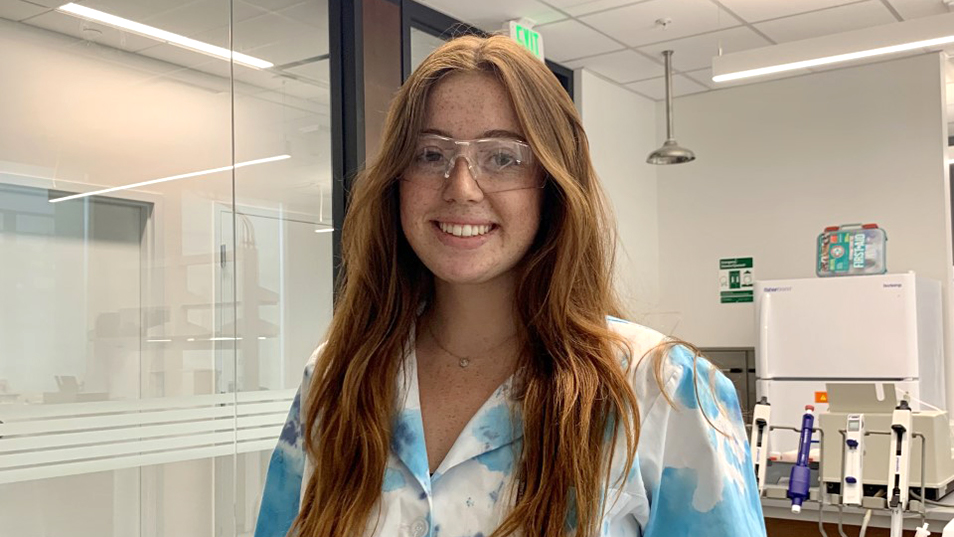Contact us
401 W. Kennedy Blvd.
Tampa, FL 33606-13490
(813) 253-3333
Since last summer, Emily Friden ’22, marine science-chemistry major, has been in the lab researching red tide, the harmful algal blooms in coastal regions that color the surface of the water and kill marine animals.

Since last summer, Emily Friden ’22, marine science-chemistry major, has been in the lab researching red tide, the harmful algal blooms in coastal regions that color the surface of the water and kill marine animals. Photo courtesy of Emily Friden ‘22
Since last summer, Emily Friden ’22, marine science-chemistry major, has been in the lab researching red tide, the harmful algal blooms in coastal regions that color the surface of the water and kill marine animals.
At The University of Tampa, students gain the opportunity to conduct research through the Summer Undergraduate Research Fellowship (SURF) program, in which they are partnered with a faculty mentor and present their findings in poster format. In addition to presenting at the Posters at the Capitol event on Jan. 21, Friden will be presenting her findings at the Ocean Science Meeting in Honolulu, Hawaii, in February.
Friden, from Rochester, NY, was mentored by Robert Masserini, associate professor of chemistry, on their project, “Red Tide in Tampa Bay: Fish Kills and Ammonium Enrichment Correlations.” Her research originally revolved around developing a new method to measure ammonium in Tampa Bay. However, as red tide increased this past summer, Friden used that to her advantage for more insight.

The research demonstrates the capabilities of their new ultra-sensitive technique to measure ammonium in natural waters. Photo courtesy of Friden
More UT News